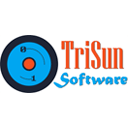Feature of Our Double File Finder - Flexible Scanning Conditions: Drives, Folders, Files, Sizes and Types
Go to Product Homepage >>>
On the main interface of Duplicate File Finder Plus, you can specify scanning conditions as required:
Screenshot A: the main interface of our duplicate file deleter.
"Select resources" area on the left: used to specify the drives, folders or files to be scanned.
"All drives": all files in all drives of your computer will be scanned (except the excluded folders/files that set on the option interface)."All but excludes the following checked drive(s)": will scan all the drives except the checked drive(s) under this option, and these three types of drives will be excluded by default. Because 1. removing the files in the "system drive" may damage the system. 2. the "CD drive(s)" are generally read-only, even if they are readable and writable, the CD is used to back up data in general, so that is unnecessary and maybe impossible to remove the resources on them. 3. in Windows, a "network drive" is generally a mapped path on the server or other computers, it is generally read-only. Even if it can be read and written, that is inconvenient to remove other computer resources without authorization.
"Only scan the following selected drive(s)": when you are sure that most of the duplicate files are stored in some drives, using this option can save a lot of scanning time.
"Only scan the following folders/files": it's your first choice when you are sure that most of the duplicate files are stored in some folders. In addition, you can also individually specify several suspected duplicate files for targeted comparison.
"Select size(s)" area on the left: used to specify the file sizes to be scanned, files outside the specified range will be ignored.
By default, only 1 MB+ files will be scanned, because the files those smaller than 1 MB only have little sense for cleaning up space. Please also note that the "empty files and folders" option, it refers to files with only name but no actual content, and folders that do not contain any files and subdirectories. All empty files and folders will be grouped together. This is actually an additional utility provided by our product.The "Select type(s)" area on the right: used to specify the file types to be compared.
We have separately listed the most common file types such as audio, videos, documents, images, applications and compressed packages, and only these 6 types are checked by default, this can meet the needs of most users.In addition, four important options are provided: "All other types with extensions", "All other types without extensions", specified types and excluded types. Especially specified types are very useful, for example, if you only need to compare Word documents just enter ".doc.docx".
At last, there are "Reset" links beside these three condition areas, if you are not satisfied with the settings, you can reset them and then adjust. You can also click the "Reset" button (circle icon with arrow) at the bottom of the main interface to reset all above conditions.
After set properly, check the options (gear button at the bottom of the main interface) and then click "Find now".
In fact, for normal users, do not need to adjust the scanning conditions and options, we have set the default settings according to the most common application scenarios. After the software is launched, directly click the "Find now" button to get the list of duplicate files as you want.
 Start experiencing our powerful duplicate file deleter!
Start experiencing our powerful duplicate file deleter!


 Duplicate File Finder Plus
Duplicate File Finder Plus
 Duplicate Photo Finder Plus
Duplicate Photo Finder Plus
 Duplicate MP3 Finder Plus
Duplicate MP3 Finder Plus





